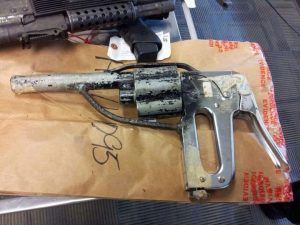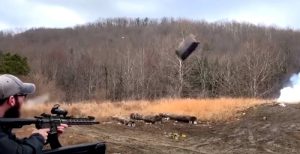Homemade or DIY guns come in all shapes and sizes. Intrepid basement-workshop gunsmiths try to make their own for various reasons.These homemade guns sadly missed the mark completely. Don’t cringe when you look at these wonders. Would it shoot? Probably these homemade guns might have potential at the one foot range, but it can also go wrong for the user as well.
–Duct tape may be one of the greatest invention because you can use it for many things like this and other guns…
-When at war, you use what you can make or acquire. This Chechen pistol is a cobbled-together weapon of questionable reliability. However, it might give the user a chance to obtain a better weapon from an enemy with a lucky shot.
-Who knows, this could be a prototype for Buck Rogers ghetto blaster…
–A homemade pistol reportedly made by Ted Kaczynski, otherwise known as the Unabomber.
Taken by the police from the streets of Sydney, Australia. They say many have been showing up among low level criminals.
-An SHTF bug out bag from one of the warlords soldier in Nigeria. Looks cool huh?
-That looks like a major kaboom waiting for anyone foolish enough to try it.
-This homemade Brazilian shotgun pistol is ready for some bad business for sure. Would it hold up if actually shot?
-A version of a pipe fitting pistol. Even plumbing equipment can become a gun.
-This homemade pistol was made by a Connecticut teen who charged $200 for this junk.
–Uzi-Wannabe this was taken from somewhere in south America.
–Taped DIY Pistol
-So here’s a DIY Submachine gun, when separated from the magazine you wouldn’t know that its a firearm. This one probably shouldn’t be in this group, but this could be one of the cleanest simple design.
Updates
Sources: Homemade Guns, Imgur, Pinterest
Looking to get some Ammo, have a look below.





